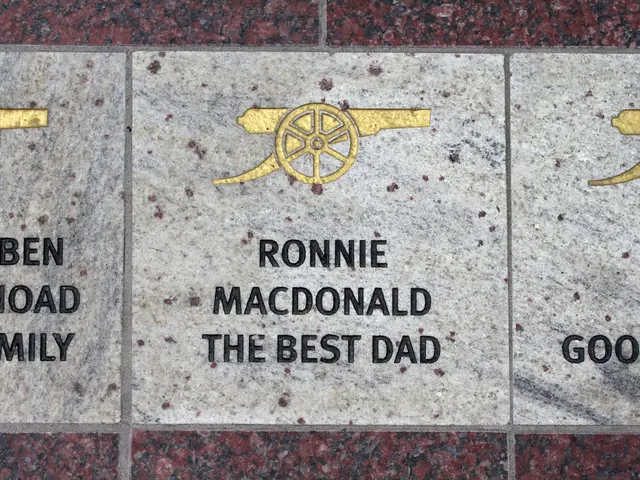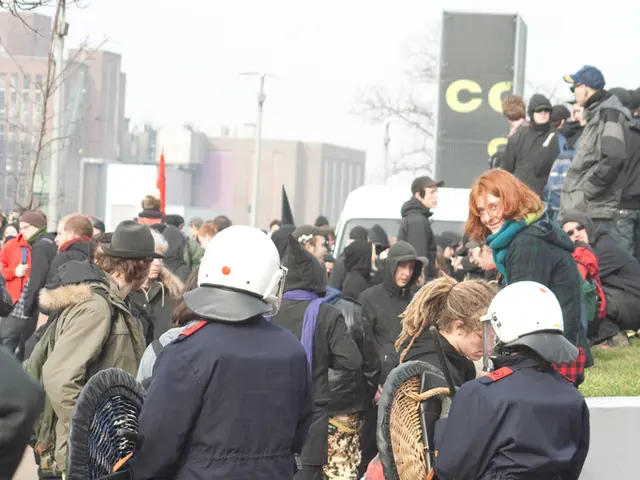Italian War Hero of the Great War: Francesco Baracca
A Heroic Symbol of Italian Aviation: The Story of Francesco Baracca's Black Prancing Horse
Francesco Baracca, born on May 9, 1888, in Lugo di Romagna, Italy, became an iconic figure in the world of aviation during World War I. Known for his personal emblem, a rearing black horse, Baracca was Italy's top-scoring fighter pilot, achieving 34 aerial victories[1][2].
Baracca's aviation career began when he received his aviator license on July 9, 1912. He quickly proved himself to be one of the most skilled aviators among his peers in the early 1910s[4]. During the Great War, Baracca flew a Nieuport aircraft[6], and on August 25, 1915, he successfully forced an Austro-Hungarian aircraft to land[7].
One of Baracca's most significant victories came on April 7, 1916, when he hit a two-man staff of a fighter aircraft[8]. His reputation grew significantly, becoming a household name. In the spring of 1917, the 91st Squadron was formed, with Baracca as one of its members[9].
Tragedy struck on June 19, 1918, during the Second Battle of the Piave River, when Baracca was shot to death by ground-fire on Montello Hill[3]. A mausoleum was built on Montello Hill in his honor on the first anniversary of his death[10].
The origin of Baracca's personal symbol, the rearing black horse, is linked to his past as a cavalryman. He chose the horse to commemorate his cavalry roots, rather than copying an emblem from an enemy aircraft, as some rumors suggest[5]. The symbol represented strength, speed, and courage, qualities emblematic of Baracca.
After Baracca's death, the emblem gained national significance. In 1923, Enzo Ferrari met Baracca’s mother, Countess Paolina, who suggested using her late son’s horse emblem as a good luck charm on Ferrari's racing cars. Ferrari adopted the black prancing horse but placed it on a yellow background to represent his hometown, Modena[1][3][5].
Today, the rearing black horse symbolizes Baracca’s military achievements, his cavalry background, and has become a lasting icon of Italian pride and history, most famously carried on by Ferrari’s logo[1][2][5].
For more insights into the captivating epoch of Italian aviation during this time, visit the Gianni Caproni Air Force Museum in Trento[2]. The museum offers a wealth of information about Baracca and other Italian aviators who played crucial roles in World War I.
[1] https://www.britannica.com/biography/Francesco-Baracca [2] https://www.giannicaproni.it/en/ [3] https://www.ferrari.com/en-EN/heritage/history/the-prancing-horse [4] https://www.britannica.com/topic/World-War-I/The-Italian-Front [5] https://www.autocar.co.uk/car-news/motoring-history/the-prancing-horse-story-behind-the-ferrari-logo [6] https://www.aircraft-history.com/nieuport-17.html [7] https://www.bbc.com/news/world-europe-46028488 [8] https://www.history.com/news/francesco-baracca-italian-ace-pilot [9] https://www.history.com/topics/world-war-i/italian-air-service [10] https://www.cnn.com/travel/article/francesco-baracca-italy-monument-history/index.html
- Aviation pioneers like Francesco Baracca contributed significantly to aviation history and science, shaping the industry and finance.
- The symbol of a rearing black horse, originally from Italian aviation leader Francesco Baracca, is a testament to the intersection of science, industry, and space-and-astronomy in the aerospace field.
- Gadgets and smartphones today often feature the sleek design of the black prancing horse, a nod to the technology's roots in aerospace and war-and-conflicts.
- In the world of policy-and-legislation and politics, the black horse symbol represents general-news and sports, particularly European leagues like the Champions League, Serie A, and Laliga.
- The rearing black horse, a symbol of Italian aviation, Aviation Pioneers, and sports champions like Francesco Baracca, adds drama and excitement to football matches across countries.
- During the Great War, aviation finance played a crucial role in acquiring advanced gadgets and technology for famous pilots like Baracca, enhancing their victories in both aerial battles and competitive sports.7.ingera-tu-ergo-sumero, the phrase engraved on Baracca's tombstone (meaning 'Do it and I will follow'), reflects his unwavering dedication to peace and justice, representing a symbol of inspiration for future generations in war-and-conflicts and policy-and-legislation.
- Today, Baracca's rearing black horse logo embodies courage, strength, and speed, with parallels found in various science, sports, finance, politics, and war-and-conflicts arenas.
- Traveling to the Gianni Caproni Air Force Museum in Trento offers a unique opportunity to delve deeper into the history and legacy of the black prancing horse and other aviation pioneers who shaped the 20th century.
- As a symbol of Italian Aviation history, politics, sports, and technology, the rearing black horse has become a beacon of national pride, uniting the people of Italy in times of peace and conflict.








